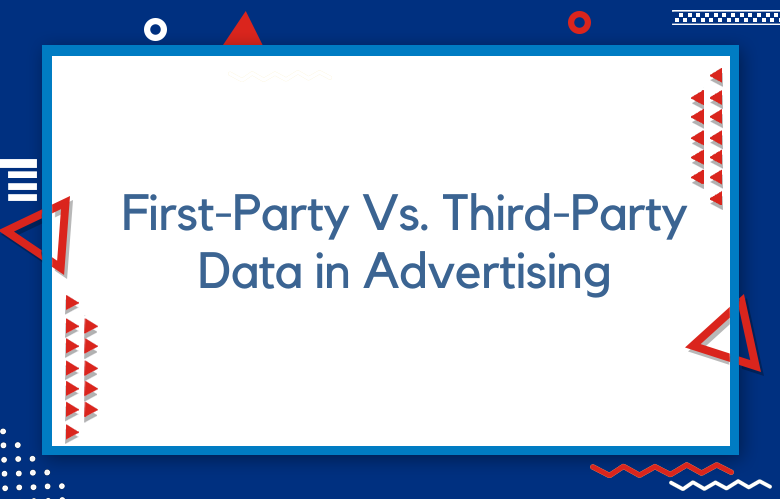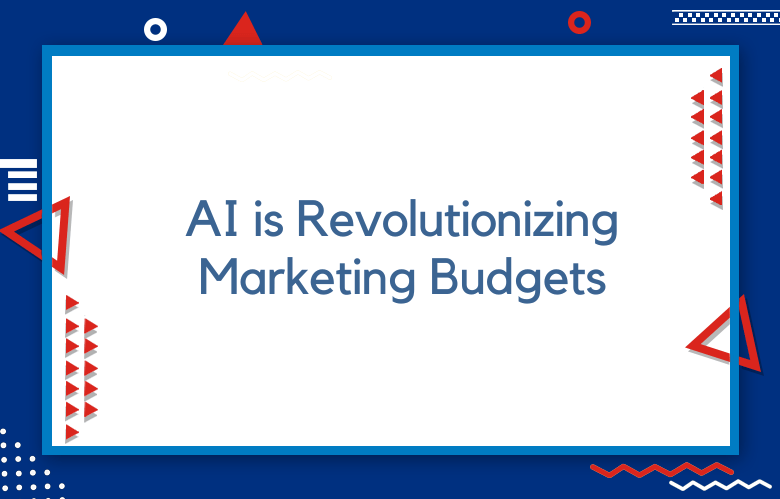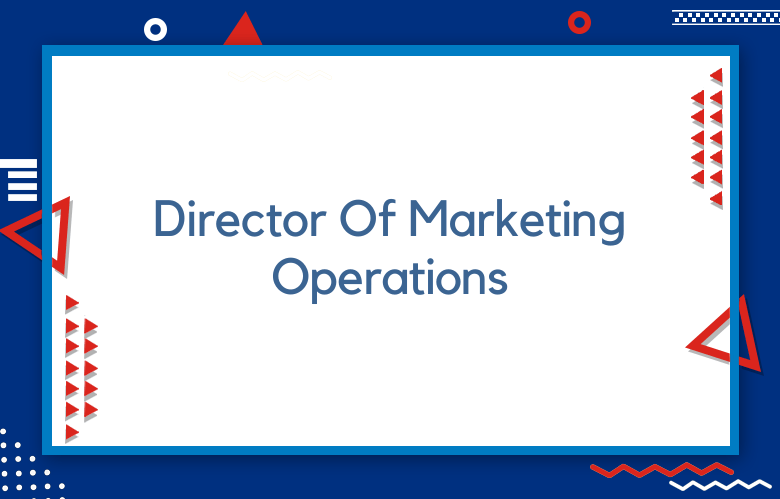The Difference First-Party Vs. Third-Party Data in Advertising

There is a common misconception regarding digital advertising that all data is created equal. However, marketers must be aware of two types of data: First-party and third-party data.
Many marketers make the mistake of relying too heavily on third-party data while failing to leverage their first-party data to the fullest extent. We will break down the difference between these two types of data, the pros and cons of each, and how to best utilize both to improve your advertising strategy.
First, let’s define what we mean by first-party and third-party data. First-party data is any data directly collected by a company from customer interactions, such as website visits, purchases, or social media engagement.
This data is considered more valuable than third-party data, as it is not available to any other company and is unique to your brand.
On the other hand, third-party data is collected by outside sources, such as data management platforms (DMP), and sold or shared with multiple companies. This type of data can include demographic information, interests, and behaviors of users across a wide range of websites and platforms.
What is First-Party Data?
First-party data refers to information collected by a company directly from its customers or website visitors. This data is typically gathered through interactions like website visits, app usage, surveys, and customer transactions.
It is one of the most valuable sources of information for businesses, as it provides a wealth of insights into consumer behavior, preferences, and interests.
The use of first-party data provides several advantages over third-party data, which is purchased from other sources. First, it is typically more accurate and reliable, coming directly from the start. Second, it can be more targeted and relevant to the business, as it is specific to its customers or visitors.
Businesses can collect first-party data in several ways. One standard method is cookies, tiny files stored on the user’s device that track their actions on the website.
Another approach is using customer relationship management (CRM) systems, which collect and organize data from customer interactions and transactions.
What is Third-Party Data?
Third-party data refers to information collected and owned by external parties not directly involved in a company’s operations. This data is typically acquired through partnerships and can include demographic, behavioral, and transactional information.
In the digital age, third-party data has become an increasingly vital tool for businesses seeking to enhance their marketing and advertising efforts. By leveraging external data sources, companies can gain insights into their target audiences’ interests, behaviors, and preferences. This information can then be used to optimize campaigns, personalize messaging, and drive conversions.
However, using third-party data also raises concerns about privacy and security. As external sources may have differing policies and standards, businesses must ensure they utilize data from trustworthy sources. They must comply with regulatory frameworks and adhere to ethical principles such as transparency and consent.
What is First-Party Data in Advertising?
First-party data in advertising refers to the information collected directly by a business or organization from its audience or customers. This can include demographic data, browsing behavior, purchase history, and email addresses, among other types of information.
The critical characteristic of first-party data is that it is obtained through direct interactions with customers or website visitors rather than being acquired from third-party sources.
First-party data is valuable to advertisers because it allows for more targeted and personalized advertising.
Using first-party data, advertisers can tailor their messages to specific audiences based on their interests, behaviors, and preferences. This can lead to more efficient and effective advertising campaigns and higher levels of engagement and conversion.
What is Third-Party Data in Advertising?
Third-party advertising data is information collected from various sources. It is typically sold by data brokers to marketers and advertisers, who use it to improve targeting and personalize messaging. Other companies generate this data, which is acquired by third-party data providers.
Third-party data is collected through various channels, including cookies, pixels, and APIs. This data covers demographics such as age, gender, location, browsing history, interests, and purchase behaviors. This information is precious to advertisers because it allows them to target specific audiences effectively.
Third-party data is used in digital advertising to help businesses better understand consumer behavior.
Data is used in various ways, such as targeting specific ads to a particular age group or geographic location. The ultimate aim is to personalize the messaging to deliver a better customer experience and increase the chances of conversion.
Understanding the Difference: First-Party vs. Third-Party Data in Advertising
As digital advertising continues to evolve and become more sophisticated, marketers and advertisers are constantly seeking ways to target their audience more effectively. This has led to data classification as first-party and third-party integral components of modern advertising campaigns.
First-party data is information collected directly from a business’s customers or website visitors. This data is typically obtained through various sources, including web analytics, customer relationship management (CRM) systems, and transaction data.
It gives marketers valuable insights into customers’ behaviors, preferences, and interests, vital for creating personalized and effective marketing campaigns.
On the other hand, third-party data comes from external sources like data aggregators or providers who collect data from various sources and then sell it to businesses for targeting purposes.
This data can supplement first-party data or tap into a broader audience that might not be available through first-party data alone. It includes information such as potential customers’ demographics, psychographics, and purchase behaviors.
The Benefits of First-Party Data for Advertisers
Increased Targeting Accuracy
One of the primary benefits of first-party data for advertisers is that it can help to increase targeting accuracy. By collecting customer data, advertisers can better understand their target audience and use this information to create more personalized and effective campaigns. This can lead to higher conversion rates, as customers are more likely to respond positively to campaigns tailored specifically to them.
Improved Customer Insights
First-party data also provides advertisers with improved customer insights. By collecting purchase history, browsing behavior, and demographic information, advertisers can better understand customers’ needs and preferences. This allows them to create more targeted campaigns that are more likely to resonate with their audience and generate higher ROI.
Reduced Ad Fraud
Another benefit of first-party data is that it can help reduce ad fraud. By collecting customer data, advertisers can ensure that they target genuine users interested in their products or services rather than bots or other fraudulent sources. This helps to reduce wasted ad spend and improve overall campaign performance.
Enhanced Data Security
First-party data also provides enhanced security for customer data compared to third-party sources. Since the advertiser collects the data directly, they have complete control over how it is stored and used, reducing the risk of unauthorized access or misuse of customer information.
Cost Savings
Advertisers who use first-party data can also save money compared to those who rely on third-party sources. Since they don’t have to pay for third-party services or fees associated with using them, they can keep their costs down while still gaining access to valuable customer insights and analytics tools that will help them improve their campaigns and maximize ROI
Why Third-Party Data is Valuable in Advertising
Third-party data is an essential component of modern advertising campaigns. It provides advertisers with valuable information about their target audience, enabling them to make informed decisions on how best to reach and engage with potential customers.
Third-party data is collected from various sources, such as customer surveys, social media platforms, and data brokers. This information includes demographics, interests, online behavior, and purchasing history, among other things.
The most significant advantage of third-party data for advertisers is that it allows for more precise targeting. By segmenting audiences based on their characteristics and interests, advertisers can create personalized and relevant ads that resonate with their target customers.
This, in turn, leads to higher engagement rates, increased click-through rates, and, ultimately, better ad performance. Studies have shown that ads targeted using third-party data can be up to five times more effective than non-targeted ads.
The Role of Trusted Partners and Second-Party Data in Advertising
Advertising is a crucial aspect of modern business, and companies continually look for ways to make their advertising campaigns more effective. One of the most critical factors in the success of an advertising campaign is having access to high-quality data. However, not all data is created equal; some are more valuable than others.
This is where trusted partners and second-party data come into play. Trusted partners are organizations that companies work with to obtain reliable data. These partners may collect data themselves or acquire it from other sources. The key is that they have a reputation for providing accurate data.
Second-party data is acquired from another organization rather than collected directly. It is typically obtained from a trusted partner and can be highly valuable. Consider a sports retailer that wants to target a specific demographic of customers.
Rather than trying to collect this data, the retailer may work with a trusted partner who already has it. This partner can provide the retailer with second-party data, which the retailer can use to create more effective advertising campaigns.
Combining First-Party, Second-Party, and Third-Party Data for Maximum Advertising Insights
In today’s digital age, data is king. With the vast amount of data generated by consumers’ online behaviors, businesses have access to valuable insights that can help them make informed decisions and drive successful advertising campaigns.
However, not all data is created equal. First-party, second-party, and third-party data each offer unique advantages and limitations, which is why many businesses combine these three data types for maximum advertising insights.
First-party data refers to any information a business collects directly from its customers or website visitors. This could include demographic information, purchase history, and website behavior data. The advantage of first-party data is that it is highly accurate and specific to the particular business and its customers.
This data is also often readily available to the business, as it does not require partnerships or agreements with third-party vendors. However, because first-party data is limited to a single source, it can sometimes lack the broader context businesses need to make informed advertising decisions.
The Definition and Importance of First-Party Data
First-party data refers to the information an organization collects directly from its customers or users. It can include various data types such as demographic information, search history, purchase history, and customer feedback.
First-party data is usually collected through website analytics, surveys, online forms, and social media platforms where customers interact with brands.
The significance of first-party data must be balanced in today’s data-driven business world. It is a goldmine of information that helps organizations comprehensively understand their customers’ behavior, preferences, needs, and pain points.
By leveraging first-party data, organizations can effectively create targeted marketing campaigns, improve customer experience, and make informed business decisions based on facts rather than assumptions.
Advantages and Challenges of Collecting First-Party Data
Increased Control and Flexibility
One of the main advantages of collecting first-party data is that it gives organizations greater control and flexibility over how they use their data.
Organizations can tailor their data collection strategies to meet their needs by collecting first-party data. This allows them to manage more targeted and relevant data, which can be used to create more accurate customer profiles and better understand customer behavior.
Improved Quality of Data
Collecting first-party data also improves the quality of the data collected. Because organizations control the data collection, they can ensure that only high-quality, accurate, and up-to-date information is collected. This can help improve the accuracy of insights derived from the data and reduce potential bias in decision-making.
Cost Savings
Collecting first-party data can also lead to cost savings for organizations. By collecting customers’ data, such as market research or analytics, organizations can avoid paying third parties to access customers’ information or services.
This can help organizations save money on external costs associated with data collection while still gaining valuable insights into their customers’ behavior and preferences.
Increased Trust
Collecting first-party data also helps build trust between an organization and its customers by showing that the organization values its customers’ privacy and security.
Customers are more likely to trust an organization that takes steps to protect their personal information, such as collecting it directly from them rather than from a third-party source. This increased trust can improve customer loyalty and engagement with the organization’s products or services.
Increased Compliance Requirements
One of the main challenges of collecting first-party data is that it requires organizations to comply with various consumer privacy and protection laws and regulations, such as GDPR in Europe or CCPA in California.
Organizations must ensure adequate processes to protect customer information from unauthorized access or misuse and procedures for responding quickly when a breach occurs. Failure to comply with these regulations can result in significant fines or other penalties imposed by regulatory authorities.
Exploring the Power of Third-Party Data in Advertising
In today’s world, advertising has become essential to any business’s marketing strategy, leading to intense competition. Organizations must effectively reach their target audience to increase engagement, generate leads, and drive sales.
Businesses can achieve this by utilizing third-party data in their advertising campaigns. Third-party data refers to information collected by companies that are not the business itself or the customer. Such data can include demographic information, browsing history, and purchase behavior, among other things.
By accessing this data, businesses can understand their target audience more effectively, allowing them to tailor their advertising campaigns accordingly.
This enables businesses to create more engaging and relevant advertisements that resonate with their target audience and result in higher click-through rates and conversions.
Evaluating the Accuracy and Quality of Third-Party Data
Evaluating the accuracy and quality of third-party data is a crucial step in the data analysis process. Third-party data refers to data obtained from external sources other than the organization collecting the data.
The accuracy and quality of third-party data must be determined to ensure that the data is relevant and valuable for the analysis.
To evaluate the accuracy and quality of third-party data, it is essential to consider the source. Checking the credibility and reputation of the data provider can help determine the reliability of the data.
Factors such as the data provider’s history, the methods used to collect the data, and the industry in which the provider operates should be considered when evaluating the quality and accuracy of the data.
Leveraging Second-Party Data for Strategic Advertising Solutions
In today’s digital marketplace, advertising has become more targeted and data-driven than ever.
Advertisers can access a wealth of information about their customers and prospects, allowing them to create personalized ad campaigns tailored to individual preferences and behaviors. One powerful tool that advertisers use to achieve this level of precision is second-party data.
Second-party data refers to any data acquired directly from another company or organization. This can include customer, visitor, or transaction data.
Advertisers can better understand their target audience’s demographics, preferences, and purchase behaviors by leveraging second-party data. This enables them to create more effective advertising campaigns that are tailored to meet their customers’ specific needs.
Conclusion
In the world of digital advertising, data is king. By understanding the difference between first-party and third-party data and the pros and cons of each, you can ensure that you are making the most out of your advertising budget. While third-party data can provide valuable insights into niche audiences, first-party data is the foundation of a successful advertising strategy.
By leveraging your data, you can create influential audiences, tailor your messaging, and ensure your ads reach the right people at the right time. So, take the time to invest in your first-party data and supplement it with third-party data as needed to take your advertising to the next level.
In conclusion, both First-Party and Third-Party Data have valuable roles in advertising. While First-Party Data provides a more personalized experience for your existing customers, Third-Party Data can provide useful insights into potential customers outside of your reach.
The important thing is to use these data types ethically, with respect for data privacy, and strategically.
Knowing the differences between these two can help businesses and advertisers make the most out of their advertising campaigns. They must understand how to leverage data to improve efficiency and effectiveness.
Call: +91 9848321284
Email: [email protected]



